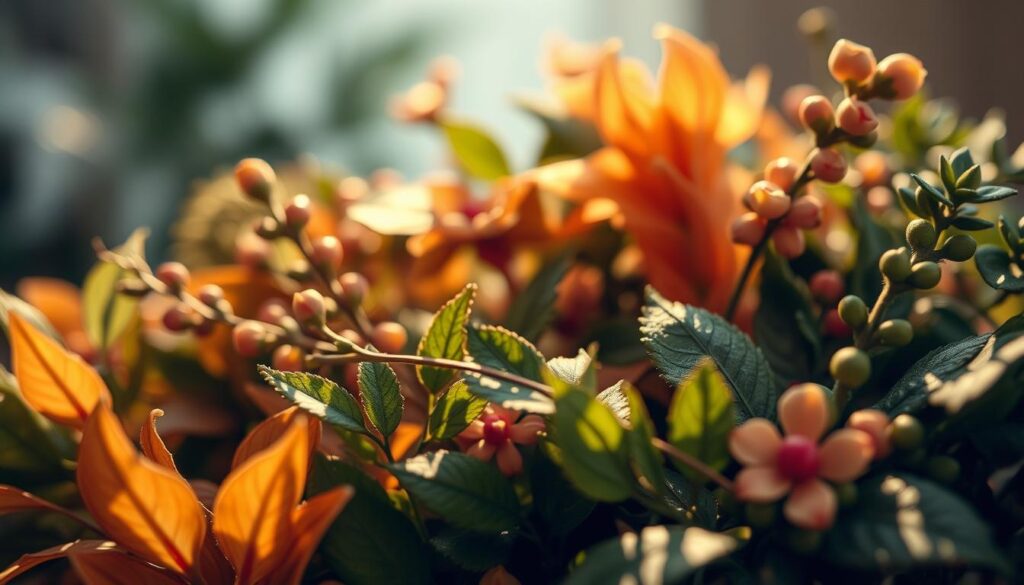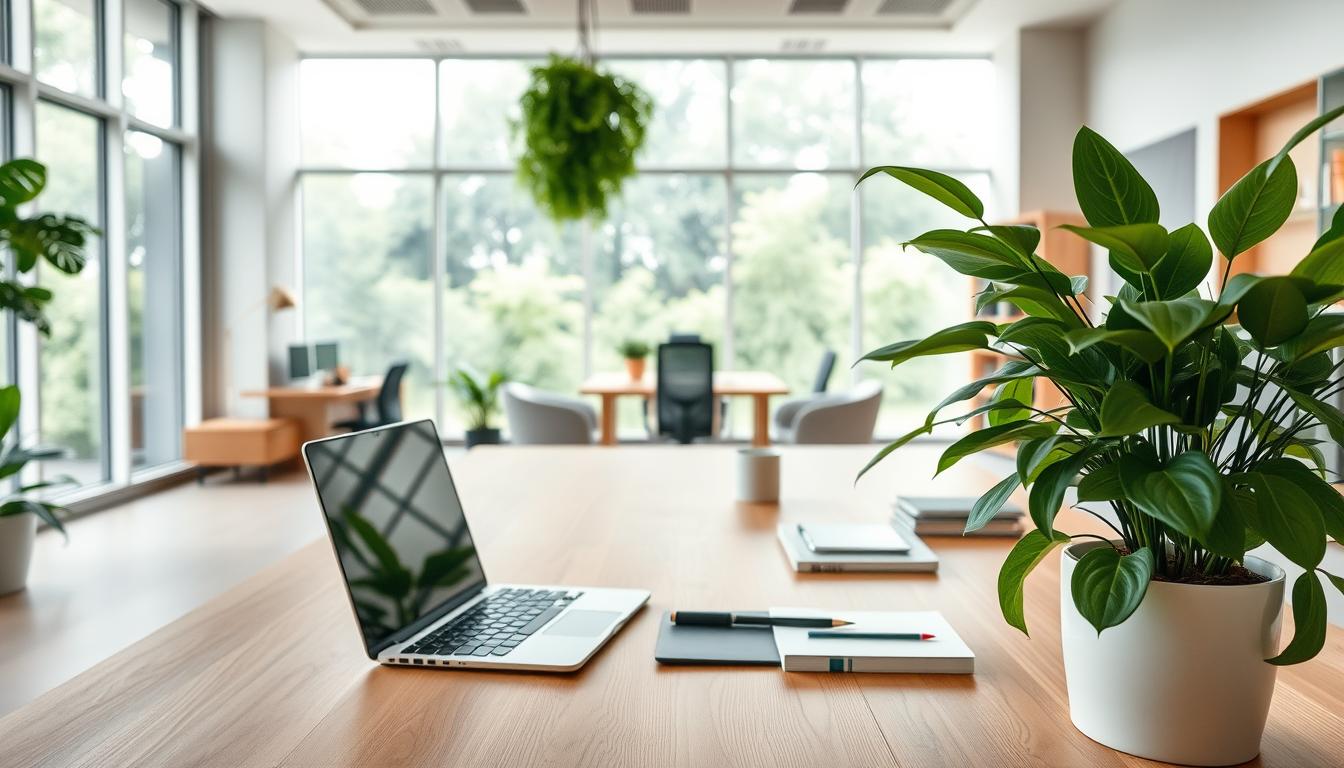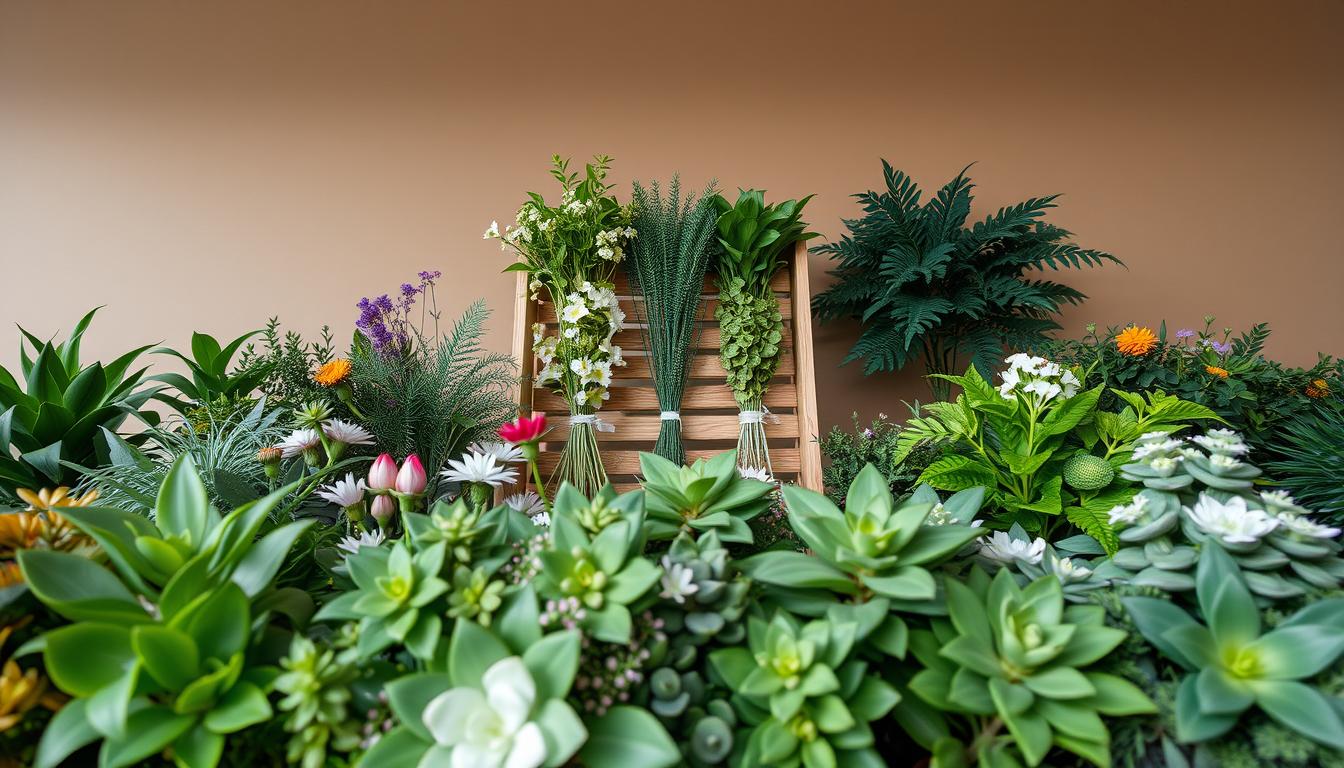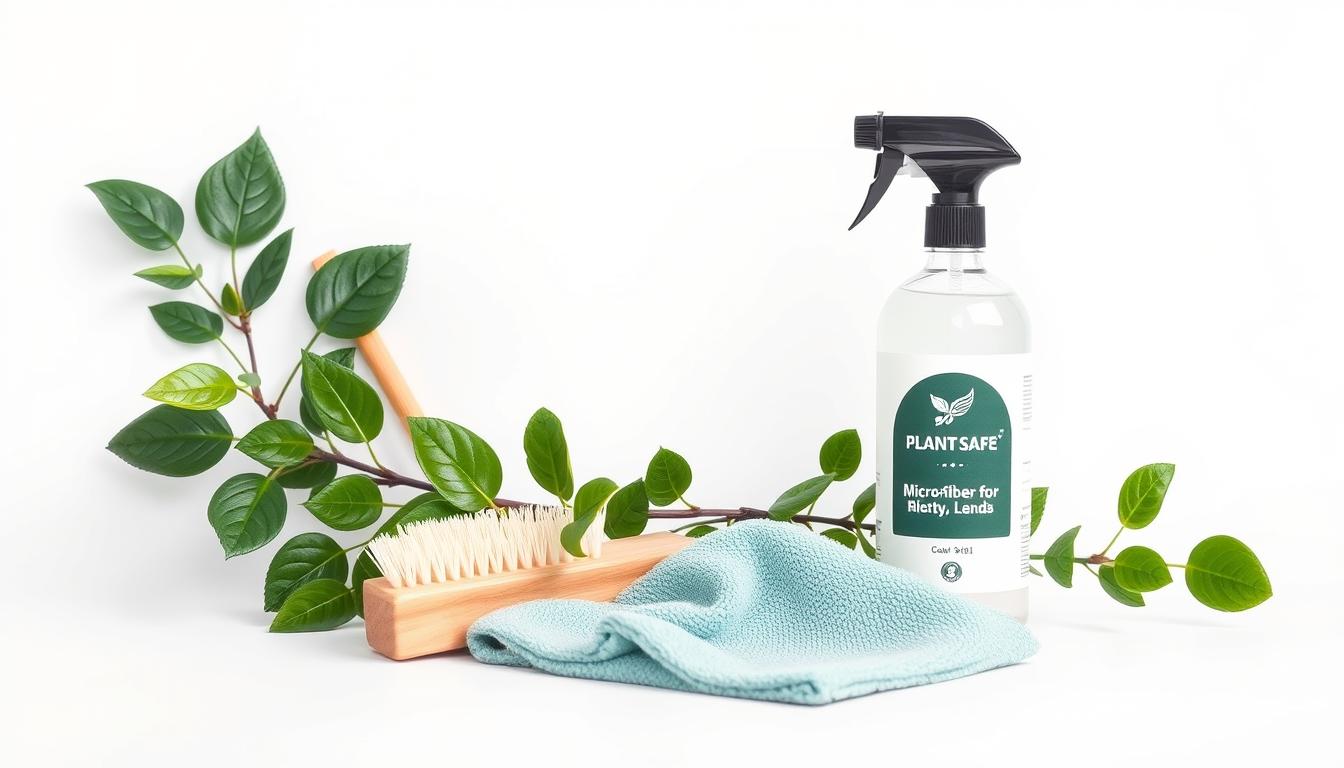Urban living is changing how we decorate our homes. Today, many people choose fake plants, especially where it’s humid. Keeping real plants alive in such areas is hard. This guide shares key advice on caring for artificial plants. It highlights easy-care greenery that looks good all year. You’ll learn about the materials used in these UV-resistant plants. Also, you’ll get useful tips to make your indoor and outdoor spaces beautiful with ease.
Understanding Artificial Plants
Artificial plants have become a common choice for adding beauty without the fuss. They look real and need little care. People love them because they can tell the difference anymore. The kinds of materials used, such as plastics and fabrics, make them look and work well.
What are Artificial Plants Made From?
Different stuff goes into making artificial plants. Here’s what’s used a lot:
- Polyester: Often picked for flower petals due to its toughness and wallet-friendly price.
- Polythene (PE): Great for outdoor plants because it can be recycled easily.
- Synthetic Silk: Chosen for silk flowers because it seems very real and soft.
- Metal: Gives strong support to some designs. It helps them last longer and stay put.
Types of Materials and Their Benefits
The materials for artificial plants have special perks. Like:
- UV Resistance: Outdoor plastic plants can resist sun damage thanks to special stuff mixed in.
- Weather Durability: These fake plants can stand up to different weathers and still look good.
- Lightweight vs. Sturdy Options: Some materials are light and easy to move, while others are strong and tough.

Why Choose Artificial Plants for Humid Climates?
Artificial plants are great for humid places. They require little care. This lets you enjoy greenery without the hassle live plants bring. They’re perfect for those who are busy but still want a stylish, vibrant home.
Low Maintenance Requirements
Artificial plants need very little care. In humid areas, looking after real plants is hard. With fake plants, you don’t need to water, trim, or feed them. This means you can relax instead of doing garden work. They look good anywhere, with no extra work needed.
Allergy-Friendly Options
Artificial plants are great for people with allergies. They don’t release pollen like real plants. So, they don’t cause allergies. They make your home safe and clean for everyone. Choosing them means you get the beauty of plants without allergy problems.
Maintaining Artificial Plant Displays in Humid Climates
Keeping artificial plant displays looking good in humid places means cleaning them often. You need to dust and remove moisture buildup. Doing this regularly keeps them looking great and lasts longer.
Effective Dusting Techniques
Dusting regularly is key to keeping artificial plants looking nice. You can:
- Use a soft brush to gently remove surface dust.
- Employ a feather duster for hard-to-reach areas.
- Wipe leaves with a microfiber cloth for a deep clean.
With these methods, you can get rid of dust without harming your plants.
Cleaning Methods for Artificial Plants
If you need a deeper clean, use warm water and mild soap. This works well, especially in humid areas. For big outdoor artificial plants, do the following:
- Gently hose them down to remove dirt.
- Scrub with soap solution and a soft cloth.
- Rinse well with clean water and dry them off to avoid moisture.
By doing this, you keep your artificial plants looking fresh. It also protects them from wear and tear.
Choosing the Right Artificial Plants
When looking for artificial plants for damp places, consider a few key points. Go for UV-resistant types to keep their colors bright in the sun. Choose materials made to handle the heat for a longer-lasting display. Also, think about if you need something lightweight or more solid, depending on your weather.
UV-Resistant Options
Focus on plants that can stand up to sunlight. They use special materials to avoid color loss from the sun. This keeps your fake plants looking fresh for a long time.
Heat Tolerance in Different Materials
Think about how well different materials can take the heat. Some plastics can keep their shape and color even when it’s hot. Picking the right material means your plants will stay looking good year-round.
Lightweight vs. Sturdy Choices
Choosing between light and heavy fake plants depends on where you live. Light ones are easy to move but may fall over in wind. Heavier ones stay put, perfect for stormy areas.
Protecting Artificial Plants from Humidity
Extreme weather can be tough on artificial plants, especially in humid places. It’s crucial to protect them from humidity to keep them looking good and lasting long. There are special steps you can take to keep them safe and in great shape.
Storage Solutions for Extreme Weather
Storing artificial plants right is key when bad weather hits. Keep them in a place that’s cool and dry to stop them from getting warped or breaking down. Here are some tips for storing them:
- Use a climate-controlled space if available.
- Wrap plants in breathable material to protect them from excess moisture.
- Avoid direct sunlight exposure during storage to prevent fading.
Relocating Plants During Storms
Moving plants indoors or to a safe spot is important to avoid damage from storms. Follow these tips to move your plants safely:
- Identify a sturdy location within your home or garage.
- Secure plants with weights or supports to avoid tipping if indoor movement is not feasible.
- Plan for potential flooding by ensuring plants are elevated off the ground.
Cleaning and Maintaining Vibrancy
Keeping your artificial plants looking good and bright needs regular cleaning and care. Paying attention to your plants helps them look better and last longer. Follow these tips to keep them vibrant, clean, and free from color fade.
Regular Cleaning Routines
Make cleaning your artificial plants a habit. Use a soft cloth to gently clean the leaves and remove dust. Dust can make them look dull. Sometimes, mix gentle soap with water for a deeper clean. This not only makes the plants look fresh but also keeps them bright.
Dealing with Color Fading
To prevent color fade, think about using UV protective sprays made for artificial materials. These sprays help keep the colors bright. Also, keep your artificial plants away from too much sunlight. By following these tips, your artificial plants will stay colorful and pleasing to the eye.
Styling Artificial Plants in Humid Spaces
Finding the best spot for your artificial plants is key. It makes your space look good and works well. Artificial plants can make both inside and outside look welcoming. They are easy to keep up with.
Best Indoor Locations for Artificial Plants
Places like bathrooms, hallways, and offices look great with fake plants. These areas don’t need real sunlight for the plants. You can put artificial plants in these spots:
- Near windows, which offer some natural light.
- On shelving or high cabinets for elevated interest.
- In corners to soften hard edges and enhance visual appeal.
Outdoor Arrangements and Considerations
For outside, remember different weather conditions. Use plants that can handle the sun to keep your decor looking fresh. Think about these tips when setting up outdoor artificial plants:
- Positioning away from strong winds protects delicate features.
- Using various types of plants adds depth and texture.
- Group plants in clusters for a more natural look.
Benefits of Artificial Plants Over Live Plants
Artificial plants have several advantages for today’s decor. They keep a consistent look throughout the year. Unlike real plants, they don’t change with the seasons or need much care to stay bright. This means you get a great look without the hard work of gardening.
Consistent Appearance Year-Round
Artificial plants always look their best. They keep their color and shape no matter the weather. So, you can have lovely greenery without worrying about them getting damaged or fading. They’re ideal for any indoor area.
Non-Toxic and Kid-Friendly
When you’re decorating your home, especially with kids or pets around, safety is key. Artificial plants are a superb choice for safe decor. They don’t have dangerous chemicals like some real plants do. This means they’re safe for everyone in your family, making any room look better safely.
Conclusion
Maintaining artificial plants in humid places is about knowing the materials and how to clean them right. It’s key to keep them looking good all year, adding beauty to any space. Finding the best materials for these challenges helps a lot.
Artificial plants are great because they’re easy to take care of and don’t cause allergies. This guide talks about how to keep them looking nice with simple care. It shows the value of good looks and regular cleaning.
By using the tips we talked about, your fake plants will stay beautiful. This way, you make your home or office look better. Plus, you get to enjoy a green space without the extra work, even in a humid climate.



